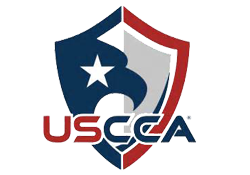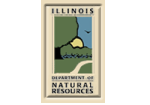TEMPERATURE DROPS, WATERFOWL ACTION HEATS UP
 Waterfowl hunting in Will County was off to a slow start this fall. Unseasonably warm temperatures kept a lot of migratory ducks and geese from starting their long trek south for the winter. But when temperatures dropped the second week of December, the birds finally got moving. Hundreds of thousands of Canadian Geese and all species or ducks have been pouring through Will County, offering some fantastic waterfowl hunting opportunities.
Waterfowl hunting in Will County was off to a slow start this fall. Unseasonably warm temperatures kept a lot of migratory ducks and geese from starting their long trek south for the winter. But when temperatures dropped the second week of December, the birds finally got moving. Hundreds of thousands of Canadian Geese and all species or ducks have been pouring through Will County, offering some fantastic waterfowl hunting opportunities.
Although most of the birds are moving south, some will stick around our area as long as there is open water and food available. The birds are hitting cornfields that have not been plowed, where they can feed on loose grain. The cold snap has frozen up a lot of ponds and rivers, so the birds will be more concentrated in pockets of open water. For the best chance to limit out, hunters should try and target cornfields with stubble that are relatively close to some open water. A lot of birds are stacked up along the Kankakee River. And the cooling lakes on Lorenzo Road and Braidwood are still holding birds as well.
SEASON DATES
The 2010 duck season ends on December 28th in the Central Zone. Canada Goose season is open until January 8th in the Northern Zone, and January 31st in the Central Zone. The boundary that separates the zones is Lorenzo Road, New River Road, and Wilmington-Peotone Road. Goose hunting begins one half hour before sunrise until sunset. For more details on the hunting seasons and zones visit the Illinois Department of Natural Resources website at www.dnr.illinois.gov. The website also has a pdf document of a waterfowl identification chart, so hunters can be sure that they are legally shooting at birds that are in season. The DNR Conservation Officers strictly enforce the game laws, and will hand out some hefty fines when laws are broken. So make sure you know the rules before you step into the field — ignorance is no excuse.
BANDED BIRDS
The U.S. and Canadian governments began a national bird banding program that dates back to 1923. Biologists place small aluminum bands on the legs of young waterfowl so they could study bird movements, behaviors and survivability. Hunters that take a bird with a band on the leg should call the number on the band to report the time and place of harvest. Hunter cooperation on reporting band numbers gives waterfowl biologists a wealth of useful information. Biologists use this data to manage the birds in a way that provides hunters with maximum recreational opportunities while protecting waterfowl populations. Hunters that call in a report will receive a Certificate of Appreciation with information about when and where the bird was banded.
legs of young waterfowl so they could study bird movements, behaviors and survivability. Hunters that take a bird with a band on the leg should call the number on the band to report the time and place of harvest. Hunter cooperation on reporting band numbers gives waterfowl biologists a wealth of useful information. Biologists use this data to manage the birds in a way that provides hunters with maximum recreational opportunities while protecting waterfowl populations. Hunters that call in a report will receive a Certificate of Appreciation with information about when and where the bird was banded.
Illinois is right in the heart of a giant migratory path known as the Mississippi Flyway, a route that millions of migratory birds travel each year. Many species of waterfowl, ducks and geese spend the spring and summer breeding and raising young in the northern United States and throughout Canada. They then migrate in masses to warmer regions to spend the winter. Many fly to the southern United States to winter in the warm coastal regions. But not all of the birds end up there. Some of the hardier species, like the Canadian Geese, will tolerate the cold temperatures as long as there is open water and food available.



















